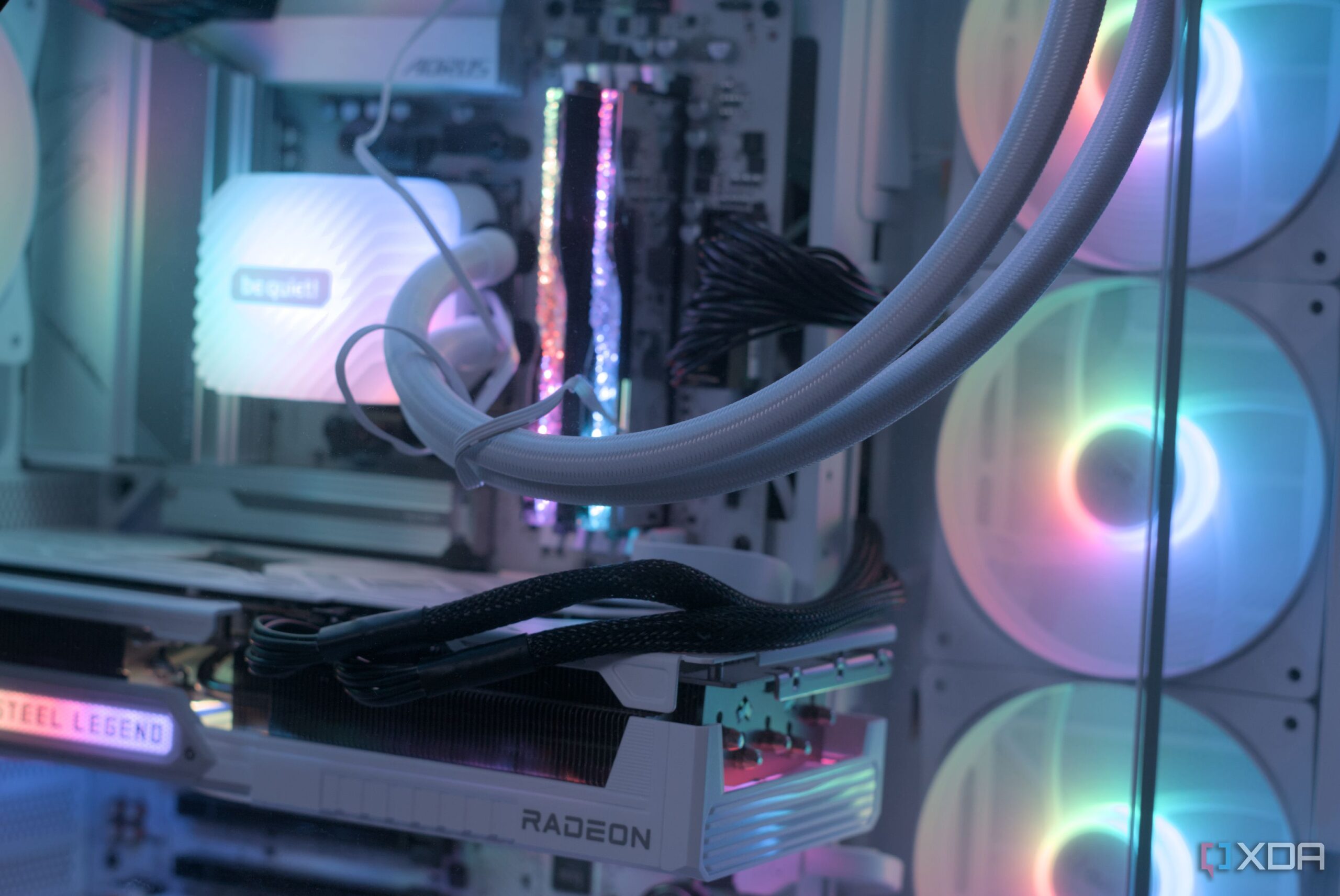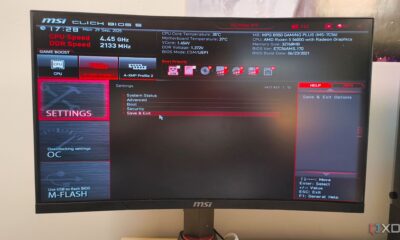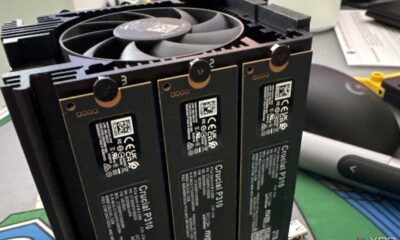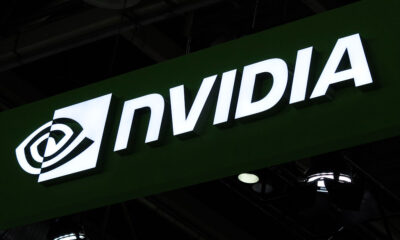Technology
Modern Computing Faces Thermal Throttling Across Key Components

Thermal throttling is becoming an increasing concern in modern computing, extending beyond the traditional focus on CPUs and graphics cards. As computers evolve to deliver greater speeds and performance, the heat generated by other components, particularly NVMe SSDs, motherboard VRMs, and DDR5 RAM, is rising sharply. This shift signifies that users must now pay attention to a wider range of hardware to ensure optimal performance.
NVMe SSDs and Rising Temperatures
NVMe drives, particularly the latest Gen 5 models, are achieving impressive data transfer speeds of up to 15 GB/s. This remarkable performance is driven by the SSD controller, which operates at extraordinary frequencies, switching billions of times per second. The physical layer within these controllers is tasked with maintaining PCIe signal integrity, and in high-capacity SSDs, the double-sided NAND stacking can impede heat dissipation.
The compact M.2 package, combined with high heat density and thermal resistance in various components, creates significant thermal challenges. To combat overheating, manufacturers equip these SSDs with thermal pads and substantial heatsinks. As the anticipated Gen 6 drives are set to generate even more heat, users can expect standard cooling solutions to include heatsinks with fans, emphasizing the importance of proper airflow in PC cases.
Motherboard VRMs and Power Management
Voltage regulator modules (VRMs) play a crucial role in converting the 12V power from the power supply unit (PSU) to the 1.1-1.4V needed for the CPU and other components. The heat generated by VRMs primarily arises from the high current flowing through MOSFETs during intensive workloads, such as overclocking. These components are designed to minimize heat loss, but inefficiencies still lead to thermal buildup.
Modern motherboards typically feature heatsinks and thermal pads for MOSFETs to mitigate heat. While these passive cooling solutions help, effective airflow remains essential for maintaining optimal VRM temperatures, particularly under load.
DDR5 RAM and Its Unique Challenges
The introduction of DDR5 RAM has introduced new thermal management challenges. Unlike previous generations, DDR5 modules incorporate integrated power management circuits, leading to increased heat generation. While thermal issues are not a widespread problem, they can manifest during high-speed operations, with enthusiasts already pushing speeds beyond 10,000 MT/s.
Thermal strain on DDR5 can result in performance drops, as noted by ASUS, which reported a 22% decline in memory performance at elevated temperatures. Users pushing their systems to the limits should monitor RAM temperatures to avoid memory errors and system crashes.
Hard Drives and Mechanical Limitations
Although hard disk drives (HDDs) do not match the speed of solid-state drives, they still produce significant heat due to their mechanical nature. The spindle motor, responsible for spinning the platters, generates heat through friction and aerodynamic drag. When placed in poorly ventilated drive cages, HDDs can experience overheating, leading to reduced read and write speeds, as well as increased vibration and noise.
To combat overheating, users should ensure adequate airflow in their systems or consider additional cooling solutions specifically designed for HDDs.
As the landscape of computing continues to evolve, the focus on thermal management must expand beyond conventional components. While CPUs and GPUs remain critical, attention to NVMe SSDs, VRMs, DDR5 RAM, and HDDs is essential for maintaining performance and reliability in modern systems. Keeping systems clean and ensuring proper airflow will significantly contribute to managing temperatures across these increasingly powerful components.
-

 Technology5 months ago
Technology5 months agoDiscover the Top 10 Calorie Counting Apps of 2025
-

 Health2 months ago
Health2 months agoBella Hadid Shares Health Update After Treatment for Lyme Disease
-

 Health3 months ago
Health3 months agoErin Bates Shares Recovery Update Following Sepsis Complications
-

 Technology4 months ago
Technology4 months agoDiscover How to Reverse Image Search Using ChatGPT Effortlessly
-

 Technology1 month ago
Technology1 month agoDiscover 2025’s Top GPUs for Exceptional 4K Gaming Performance
-

 Technology2 months ago
Technology2 months agoElectric Moto Influencer Surronster Arrested in Tijuana
-

 Technology5 months ago
Technology5 months agoMeta Initiates $60B AI Data Center Expansion, Starting in Ohio
-

 Technology5 months ago
Technology5 months agoRecovering a Suspended TikTok Account: A Step-by-Step Guide
-

 Health4 months ago
Health4 months agoTested: Rab Firewall Mountain Jacket Survives Harsh Conditions
-

 Lifestyle5 months ago
Lifestyle5 months agoBelton Family Reunites After Daughter Survives Hill Country Floods
-

 Technology4 months ago
Technology4 months agoHarmonic Launches AI Chatbot App to Transform Mathematical Reasoning
-

 Technology3 months ago
Technology3 months agoUncovering the Top Five Most Challenging Motorcycles to Ride

















